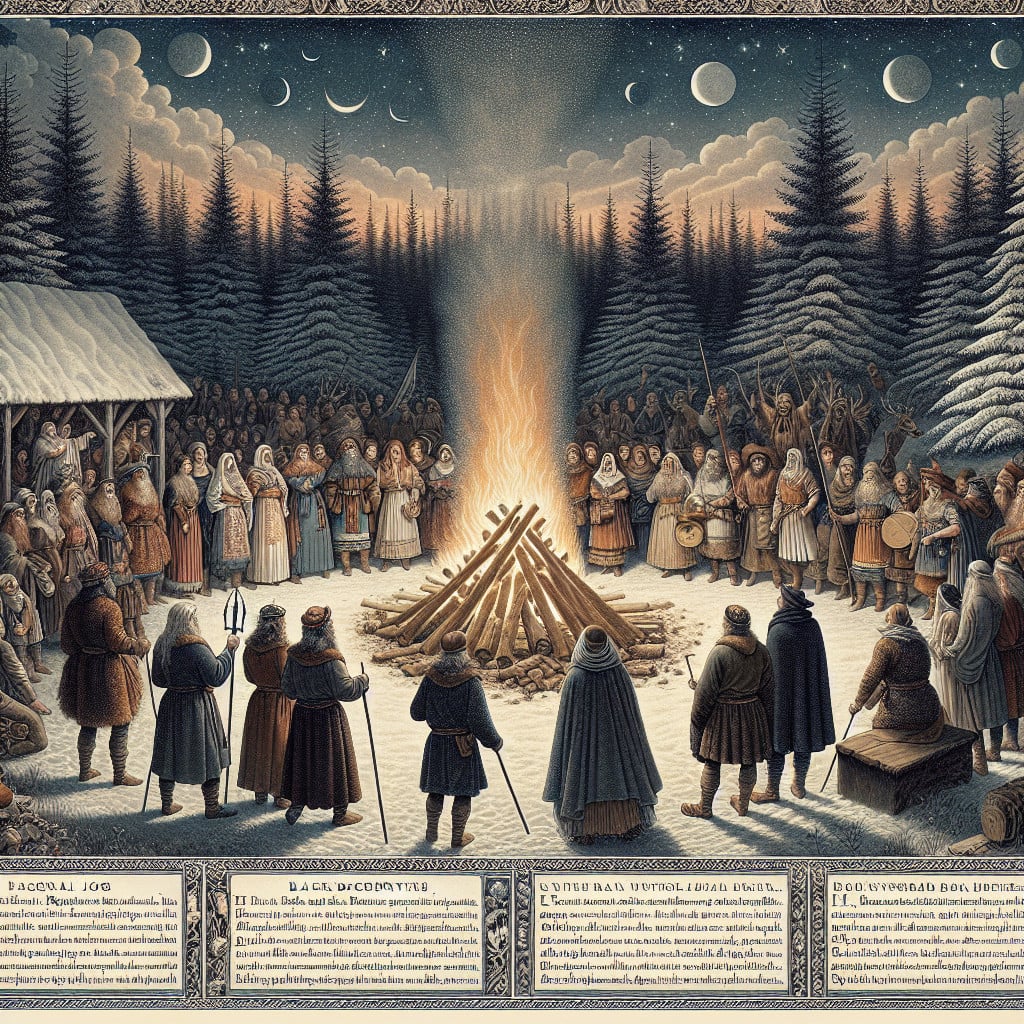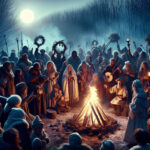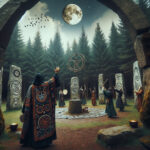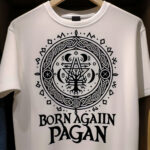The Yule Log is a traditional winter celebration that has been celebrated for centuries, with roots in paganism and other ancient traditions. The practice of burning a Yule Log is still popular today, and has come to symbolize the warmth and joy of the holiday season. In this article, we explore the pagan origins of the Yule Log, from its symbolism to its ancient rituals. We will look at how the Yule Log has been adapted and changed over time, and the various ways it is celebrated today.

Yule Log Pagan Origins
Yule logs are a traditional Christmas decoration that dates back to pagan times. They are typically made of wood and often decorated with evergreen branches, holly and ivy. The log is lit on Christmas Eve, and burned until Twelfth Night (January 5th), when it is ceremoniously extinguished.
The history of the Yule log can be traced back to pre-Christian pagan traditions. In northern Europe, the winter solstice was celebrated with a festival of fire, in which large logs were burned to signify the return of the sun and the end of the long winter.
The custom of burning a Yule log was brought to England by the early Saxons and is mentioned in the Anglo-Saxon Chronicle in 877 AD. The log was believed to bring good luck and was usually decorated with evergreen branches and holly.
Today, the Yule log is still a popular Christmas tradition in many countries. In some parts of the UK, a Yule log is traditionally carried into the house on Christmas Eve and lit in the fireplace. In Germany, a Yule log is still burned in some homes on Christmas Day.
What is the meaning of Yule Log?
The Yule log is an ancient symbol that has been associated with the winter solstice since pagan times. In pagan cultures, the Yule log was believed to be a symbol of the sun, as it was lit to signify the return of the sun after the long winter darkness. It was also thought to bring good luck, as it was believed to protect the home and its inhabitants from evil spirits.
Today, the Yule log is still seen as a symbol of the winter solstice and the return of the sun. It is also seen as a symbol of hope and joy, as it reminds us of the coming of Christmas and the promise of a new year.
How to Make a Yule Log?
Making a Yule log is a fun and easy way to create a festive atmosphere in your home. All you need is a log of wood, some evergreen branches, holly, ivy and a few decorations.
First, you will need to choose a log of wood that is about 18 inches long and 4-5 inches in diameter. You can use any type of wood, but oak is traditional. Once you have chosen a log, take it outside and give it a good scrub with a stiff brush. This will help to remove moss and dirt.
Next, you will need to gather some evergreen branches, holly and ivy. Place the branches around the log in a circular pattern, then weave the holly and ivy between the branches. You can also add decorations such as ribbons and baubles.
Finally, you will need to light the Yule log. Place it in the fireplace and light it with a match or lighter. Allow it to burn for a few hours until it is reduced to a pile of glowing embers.
What is the Significance of Yule Log?
The Yule log is a symbol of hope and joy, as it reminds us of the coming of Christmas and the promise of a new year. It is a reminder of the return of the sun and the end of the long winter. It is also a symbol of good luck, as it was believed to protect the home and its inhabitants from evil spirits.
Today, the Yule log is still a popular Christmas tradition in many countries. It is a fun and easy way to create a festive atmosphere in your home and brings with it the promise of hope and joy.
The Yule Log is a beloved holiday tradition that has been around for centuries and has its roots in paganism. While the exact origin of the tradition is unknown, it is believed to have come from the Norse and Germanic pagan celebrations of winter solstice. The Yule Log has come to symbolize warmth, joy, and the spirit of the holiday season. Its rich history is a reminder of the power of tradition and the importance of celebrating the winter solstice.





